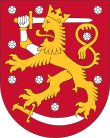
Back Eleccions parlamentàries finlandeses de 2003 Catalan Parlamentní volby ve Finsku 2003 Czech Finlands rigsdagsvalg 2003 Danish Parlamentswahl in Finnland 2003 German Elecciones parlamentarias de Finlandia de 2003 Spanish 2003. aasta Soome parlamendivalimised Estonian Eduskuntavaalit 2003 Finnish Élections législatives finlandaises de 2003 French Elezioni parlamentari in Finlandia del 2003 Italian Парламентские выборы в Финляндии (2003) Russian
| |||||||||||||||||||||||||||||||||||||||||||||||||||||||||||||||||||||||||||||||||||||||||||||||||||||||||||||||||||||||
All 200 seats in Parliament 101 seats needed for a majority | |||||||||||||||||||||||||||||||||||||||||||||||||||||||||||||||||||||||||||||||||||||||||||||||||||||||||||||||||||||||
|---|---|---|---|---|---|---|---|---|---|---|---|---|---|---|---|---|---|---|---|---|---|---|---|---|---|---|---|---|---|---|---|---|---|---|---|---|---|---|---|---|---|---|---|---|---|---|---|---|---|---|---|---|---|---|---|---|---|---|---|---|---|---|---|---|---|---|---|---|---|---|---|---|---|---|---|---|---|---|---|---|---|---|---|---|---|---|---|---|---|---|---|---|---|---|---|---|---|---|---|---|---|---|---|---|---|---|---|---|---|---|---|---|---|---|---|---|---|---|---|
| Turnout | 66.7% | ||||||||||||||||||||||||||||||||||||||||||||||||||||||||||||||||||||||||||||||||||||||||||||||||||||||||||||||||||||||
| |||||||||||||||||||||||||||||||||||||||||||||||||||||||||||||||||||||||||||||||||||||||||||||||||||||||||||||||||||||||
 | |||||||||||||||||||||||||||||||||||||||||||||||||||||||||||||||||||||||||||||||||||||||||||||||||||||||||||||||||||||||
| |||||||||||||||||||||||||||||||||||||||||||||||||||||||||||||||||||||||||||||||||||||||||||||||||||||||||||||||||||||||
 |
|---|
Parliamentary elections were held in Finland on 16 March 2003.[1] The Centre Party led by Anneli Jäätteenmäki overtook the Social Democratic Party (SDP) to become the largest party in the Eduskunta. This was credited mainly to Jäätteenmäki's powerful leadership and modernization of the party still often viewed as agrarian and conservative by many. However, the SDP actually won some seats and increased its share of the vote, losing in the number of total popular votes only by a few thousand.
The Green League achieved its best results ever, but the Swedish People's Party suffered losses. The Christian Democrats gained votes but lost seats. This was partly because in 1999 and before Christian Democrats had been in an election coalition with Centre Party and benefited from this, while the Centre Party had lost seats due to the arrangement, and thus discontinued it starting from 2003. The Left Alliance continued its slow decline, while the small populist Finns Party did not do as well as some had expected.
- ^ Nohlen, D & Stöver, P (2010) Elections in Europe: A data handbook, p606 ISBN 978-3-8329-5609-7








